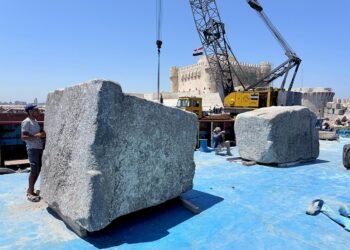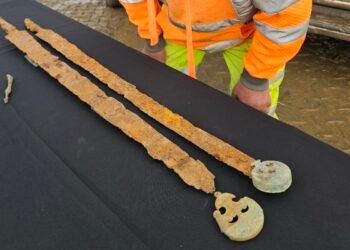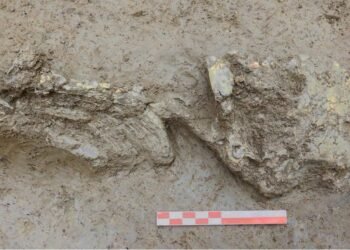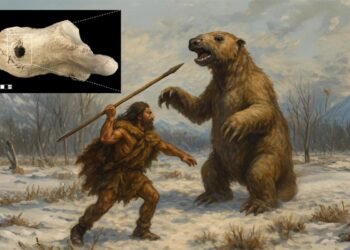A recent announcement from the European Institute for Underwater Archaeology (IEASM) revealed the discovery of “treasures and secrets” at the site of a sunken temple.

The underwater archaeological expedition, led by renowned French marine archaeologist Franck Goddio, delved into the submerged remnants of a temple dedicated to the god Amun in the once-thriving port city of Thonis-Heracleion, situated in Egypt’s Mediterranean waters.
This exploration, conducted jointly by Goddio’s team and the Department of Underwater Archaeology of Egypt’s Ministry of Tourism and Antiquities, exposed subaquatic structures that rested upon remarkably intact wooden posts and beams.
It was the place where pharaohs would visit to “receive the titles of their power as universal kings from the supreme god of the ancient Egyptian pantheon,” according to IEASM. During the investigations, the team explored the city’s south canal, uncovering massive stone blocks from the temple that had collapsed during a cataclysmic event dated to the mid-second century BCE.
As the findings were unveiled, the archaeological team unearthed precious items from the temple treasury, including silver ritual instruments, gold jewelry, and delicate alabaster containers used for perfumes and unguents.
Notably, the recent discoveries were made possible through advanced geophysical prospecting technologies, allowing the detection of cavities and objects concealed beneath layers of clay several meters thick.
The significance of the findings goes beyond Egypt, extending to Greek culture. East of the Amun temple, the researchers stumbled upon a Greek sanctuary devoted to Aphrodite, yielding bronze and ceramic artifacts. This finding highlights the interaction between Greek and Egyptian cultures during the time of the Saïte dynasty (664 – 525 BCE).
Furthermore, the discovery of Greek weapons in the area pointed to the presence of Greek mercenaries, guarding access to the Kingdom at the mouth of the Canopic Branch of the Nile, which was the largest and most navigable branch in antiquity.
Thonis-Heracleion, once a bustling port city on the Mediterranean, eventually succumbed to rising sea levels, earthquakes, tidal waves, and land liquefaction. An estimated 110 square kilometers of the Nile delta, including the city of Thonis-Heracleion, were engulfed by the sea, disappearing from the surface. The city’s remains now lie under the sea, approximately 7 kilometers from Egypt’s current coastline.























